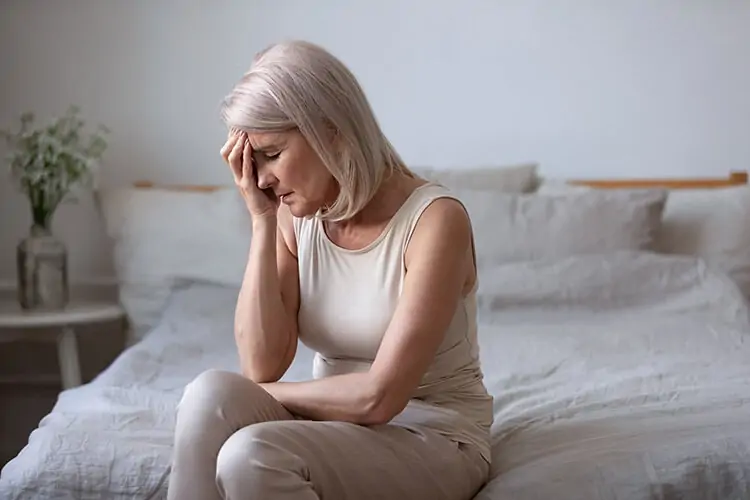
When we think about sleep apnea, a certain image often comes to mind: A older, overweight gentleman with a heroically loud snore. And while that isn’t always untrue, it’s most certainly not an accurate representation of all types of sleep apnea sufferers.
Against the stereotypes, sleep apnea can affect all genders, races and body types. Many sleep apnea sufferers present with less common symptoms than those normally associated with sleep apnea. Not all sleep apnea sufferers snore, some are a healthy normal body weight and many are women.
Sleep apnea in women
March is Women’s Month, so what better time to bring attention to something often under-diagnosed and under-served in women – sleep apnea.
Obstructive Sleep Apnea (OSA) is a common sleep disorder characterized by repeated interruptions in breathing throughout the sleep cycle. This is caused by the collapse of soft tissue in the throat, which prevents oxygen from reaching the lungs. These interruptions in your breathing forces the brain to wake itself up, to get your throat back open and you breathing again. Most of the time, people are unaware of these disruptions to their sleep. Over time, however, your mind and body aren’t getting proper rest, which can lead to daytime fatigue and grogginess.
There are some things that can increase the risk of developing sleep apnea in both men and women. Some of these include obesity, having a large tongue and/or weak muscles in the throat. Estimates suggest that as many as 26% of adults (aged 30-70) have obstructive sleep apnea. And while men are twice as likely as women to have sleep apnea, they’re diagnosed with it 8 times more often than women.
Why is this? Angie Randazzo, Behavioral Sleep Medicine Specialist at St. Luke’s Sleep Medicine & Research Center says, “women with OSA present differently than men. They often don’t have the stereotypical body type and don’t always say they are sleepy. Many will say they are fatigued, leading clinicians to think they have insomnia versus OSA.”
Why are a disproportionate number of women being diagnosed with sleep apnea?
There’s a variety of explanations:
- Many general practitioners have preconceived notions about what the typical sleep apnea patient presents like, and as a result, they may disregard women’s symptoms when they don’t fit the image.
- Women are less likely to report one of the most common signs of sleep apnea – loud snoring.
- Women with sleep apnea often present differently than men with sleep apnea. Their snoring is often much lighter, they have less obvious difficulties with their breathing, and they tend to have a lower number of apnea events per hour (AHI) than men.
- The signs of sleep apnea in women are also common in other disorders, which can often lead to a misdiagnosis. Such symptoms include fatigue, insomnia, headaches, mood disturbances, a lack of energy, restless leg syndrome and depression.
- Women with OSA tend to have a lower AHI and high BMI.
- Prescription medications, such as antidepressants, are often tried before further testing, such as a sleep study, are ordered.
Women are much more likely to notice their bed-partner’s sleep disturbances than are men. Therefore women are much less likely to seek testing or treatment due to concern from their male partners.
So, how can women ensure they are properly assessed and diagnosed for sleep apnea? With proper sleep education and awareness, both physicians and their female patient will be better equipped to recognize the risk factors and common signs and symptoms of OSA and how it presents in women.
Symptoms typical of women who suffer from sleep apnea include:
- Snoring, even lightly
- Pauses in breathing during sleep
- Fatigue
- Excessive daytime sleepiness
- Headaches in the morning
- Low daytime energy levels
- High blood pressure that requires 2 or more medications to control
- Frequent nighttime urination
- Frequent nighttime wake-ups
- Non-restorative sleep
- Hypothyroidism
- Fibromyalgia
Risk factors for the development of OSA in women include:
- Onset of menopause
- A neck circumference of 16″ or more
- OSA is 14% more likely in women aged 55-70
- Obese women aged 50-70 are 31% more likely to have severe OSA
- Women are more likely to develop anxiety and depression than men when suffering from untreated OSA.
- In women with polycystic ovarian syndrome, the risk of developing OSA can be as high as 70%.
- Pregnancy can increase the risk of developing OSA, and untreated OSA in pregnant women can lead to complications during pregnancy.
Better sleep for women starts now
Do you suspect some of your sleep troubles are related to untreated obstructive sleep apnea?
Reach out to your nearest Snore MD sleep clinic!
It’s the first step to booking in your no-charge home sleep test to ensure you or the women in your life are well-rested and healthy.




